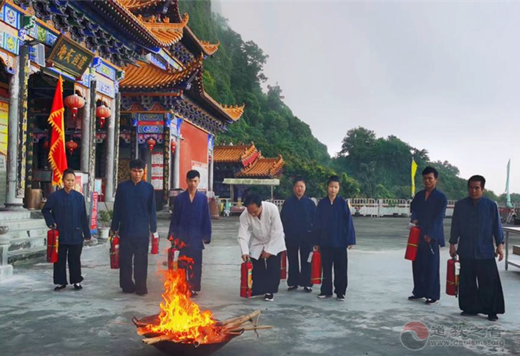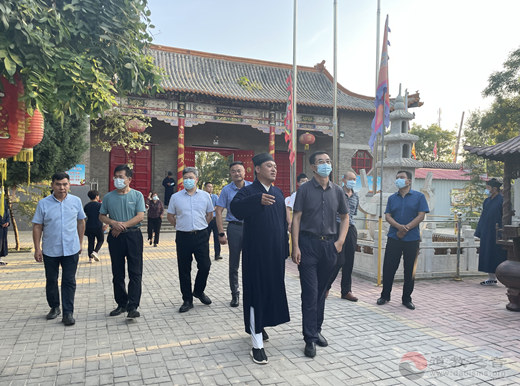
9月8日下午三点,《七星》第二集:书写——王煜宏作品展,于上海市徐汇区永福路4号101融艺术空间拉开帷幕,展览由施远担当学术主持,岳冬策展。



展览现场
王煜宏的作品会带我们去反思时间、记忆、意识、习惯和陌生化之间的关系。她的绘画结合了不同的客体对象,不同的美学参照和不同的历史瞬间。指向百年前贵族精英的一个罐子,一张20世纪80年代的新年卡片和一件日常生活中的当下物品在由多种层次构成的景观中共存,并伴有关于它们形状和文献的不同程度的阐释。明代桌子的图案与当代色彩相结合,而桌子本身可能会消失在画家一阵模糊随意的笔触中(七星),画笔自身几乎不会隐藏那些可辨认的原有的先前的图案,层次顺序和参照物。


展览现场
这些组合对现在和过去之间的关系提出问题,因为它们打破了历史话语提出的线性顺序,它将每个对象,事件和行为置于一个独特的展开序列中。那些被认为是不同的时间,年代,社会群体和参照物成为同一组清晰可辨认的对象,这些画面物体自身反对可以被模糊化的、抽象化的、晦涩的、暧昧的、隐射的或具有回避性的其它的真实模式。王煜宏解释说,她认为“传统”不是一种特定的过去,而是她已经习惯了的方式。因此,它不是以明确的时间线来反对当下,而是将“现代性”视为即将到来的,却尚未被理解,并仍然在出现的陌生化。因此,线性时间性被打破并重新组合为意识叙事,因为过去,现在和未来都被分割成多个元素,这些元素在由不同经验层次组成的新组织中重新组合。

在这个过程中,通过打破我们的感官习惯,王煜宏建议我们去体验,感受一种正在成为的可能性。当我们的眼睛在寻找对象、文献、框架和层次之间的意义和联系时,它们取代了我们生活在线性时间中的思维习惯——我们从属于取代我们的表象秩序。看到过去的现代性,未来的传统,体验记忆的动态创造性,她的作品让我们有机会意识到时间的开放性和当下的无限可能性。
何瑞雪(Horacio Ortiz)
2019年8月9日
据悉此次展览时间为2019年9月8日至19日。
[关于作者]
何瑞雪是上海华东师范大学社会发展学院人类学研究所副教授,并且担任法国国家科研中心,IRISSO,巴黎第九大学和法国巴黎文理研究大学的研究员。他毕业于巴黎政治大学,拥有纽约新学院的哲学硕士学位,以及巴黎高等社会科学学院的人类学博士学位。他的研究重点是货币和金融的人类学和社会学。2019年至2020年他将在普林斯顿高级研究所社会科学学院担任研究员。

老凤祥 210cmx136cm 布面油画 2015
Lao Fengxiang ,210cmx136cm,Oil on canvas 2015

华沙.柏林.上海 142cmx142cm 布面油画 2015
Warsaw.Berlin.Shanghai,142cmx142cm,Oil on canvas 2015

灰雀报喜 100cmx62cm 布面油画 2019
Grey sparrow Announce good news,100cmx62cm,Oil on canvas 2019

同舟 46cmx38cm 布面油画 2016
In the same boat,46cmx38cm,Oil on canvas 2016
Wang Yuhong’s work invites us to reflect on the relation between time, memory, awareness, habit and strangeness. Her paintings combine different kinds of objects, different esthetical references and different historical moments. A pot referring to the aristocratic elites of hundreds of years ago, a new year’s card from the 1980s, a contemporary object of everyday use coexist in landscapes made of multiple layers with varying degrees of clarity concerning their shapes and references. The pattern of a Ming dynasty table combines with contemporary colors, while objects may disappear under the blurring of a random brush(Seven Stars), which itself hides hardly recognizable previous patterns and layers of order and reference.
These combinations interrogate the relation between the present and the past, as they break the linear order proposed by historical discourse, which places every object, event and act in a unique sequence of unfolding. What are supposed to be different times, epochs, social groups and references become one and the same set of clearly identifiable objects, themselves opposed to other modes of reality, which can be blurred, abstracted, obscure, vague, insinuated or evasive. Wang Yuhong explains that she understands “tradition” not as a particular past, but just as that to which she has become used to it. It is thus not opposed to the present in a clear-cut temporal line, but to “modernity” as that strangeness which is coming, which is not yet understood, which is still in the process of appearing. Linear temporality is thus broken up and reordered into the narrative of awareness, as past, present and future are fragmented into multiple elements that are recombined in a new organization made of different layers of experience.
In this process, through the breaking-up of our sensorial habits, Wang Yuhong proposes us to experience, to feel new possibilities of becoming. As our eyes search for meaning and connection between objects, references, frames and layers, they displace the habit of thinking that we live in a linear time, that we belong to an order of appearance that supersedes us. Seeing modernity in the past, tradition in the future, and experiencing the dynamic creativity of memory, her work offers us the chance to become aware of the open multiplicity of time, and of the infinite possibilities of the present.
Horacio Ortiz
09 Aug. 2019
About the author
Horacio Ortiz is associate professor at the Institute of Anthropology, School of Social Development, East China Normal University, Shanghai, and researcher at the Centre National de la Recherche Scientifique, IRISSO, Université Paris Dauphine, PSL University, Paris. He graduated from Sciences Po, Paris, holds an MA in philosophy from the New School University, New York, and a PhD in anthropology from the Ecole de hautes études en sciences sociales, Paris. His research focuses on the anthropology and sociology of money and finance. In 2019-2020 he will be a member of the School of Social Science at the Institute of Advanced Study, Princeton.
王煜宏对话Horacio
1
关于传统与非传统:
Horacio认为,所谓“传统”的内涵是不断变化中的,例如“火车”在如今是传统的代步工具,而在十八世纪初,火车却是当时的新潮。所以如今的AI等技术手段,在百年后也将成为司空见惯的技术。针对这个问题,艺术家王煜宏认为,习惯可以是传统,传统不一定成习惯,由个体选择决定,习惯本身是反复经验时间和需求决定的,非传统是没有被重复经验体验的,时间在这是还未成线。而“非传统”指代她作品中传统的器物放置于当代的语境下,重新被诠释,是一种对可望不可及物件的调侃,那么戏谑手法下的传统写实油画,与此同时又呈现的是“非传统“的面貌
2
关于作品中的自我经验:
在观看画家《七星》系列作品后,Horacio站在人类学研究的立场,询问艺术家作品的自我参与度、参与方式的问题,例如为何反复出现金刚经?画中的日历片、盘碗碟等是否来自你的生活?王煜宏讲诉画中老物件的来源,以及背后承载的文脉意义,的确与自我经验有极大的关联,这种关联来自与父辈、以及外祖父等家庭的影响。她的作品有根可循,有脉可迹,为日后的创作提供前期的自我累积。
3
关于时间价值的线索:
Horacio相继问道,艺术家新作是否是按照时间脉络层层推进,艺术家认为是赋予时间今天的价值,而最可控(也就是时间相对久远的物品)的刻画放置在画面底层,而最前的涂鸦笔触则是最不可控的书写部分,也同样是时间价值的“当下”状态。
4
关于新作的形式、状态:
Horacio对画面透叠的关系十分好奇,艺术家解惑,讲述了画面是在确定与不确定的叠层关系下,在具象与抽象的撕拉之间再现的当下自我体现。同时,她认为力图在新作中找寻、发现新的绘画语言,那么叠加的意义就在于打破原有规则书写融入“新书写”。也可理解为是撕裂原有构成之后的“新迹”,是脱离像与非像的表演。
她又谈到,之所以使用静物这一表现对象,是为了达到心理与视觉的双重拓展,她在创作时没有安于易被大众接受的表现形式,而是不断尝试新的方式,这样使得创作更具趣味。把传统的写实油画也融注当代抽象的几何概念,五年前结合“七巧板”图式的一系列创作就集中体现此理念。在Horacio看来艺术家坚持一种具有“标签性”的创作方式容易得到认可。
5
关于人工智能与人类
艺术家王煜宏询问Horacio有关人类与人工智能的问题,十分人工智能将取代人类。Horacio的回答是否定的,他举例早期农业出现与人类关系的问题,“农业”作为农耕文化的重要载体,同样具有两面性,一是为人类提供食物、延长寿命、出现人类文明,二是使得产生阶级社会,地位分化逐渐不公平。
类比农业,人工智能同样可看着一种为人类服务的技术手段,只是它更加具有“拟人”形态,同样是随社会变化而不同,在百年后,这种现在看来先进的手段也将成为传统,更加高新的技术也将涌现,所以未来是令人好奇期待的。

系列3 鸿运当头 金属、胶 100cmX200cm 2018
Series 3,Good luck comes first,metal,glue,100cmX200cm 2018

被缚的普罗米修斯 100cmx60cm 布面油画2017
Prometheus Bound ,100cmx60cm,Oil on canvas 2017

如意 117cmx43cm 布面油画 2019
Ruyi,117cmx43cm,Oil on canvas 2019
Wang Yuhong talks with Haracio
1
About tradition and non-tradition
Horacio believes that the so-called "tradition" connotation is constantly changing. For example, “train” is now a traditional vehicle, but in the early eighteenth century, it was the new fashion. Therefore, today's technologies like AI will become normal after hundreds of years. In response to this question, the artist Wang Yuhong said that the habit can be the tradition, but the tradition is not necessarily a habit. It is determined by individual choice. The habit itself is formed by repeated experience and its demand. Non-tradition is not experienced by repeated experience, and there is no narrative clue of time. "Non-tradition" refers to the traditional artifacts in her works placed in the contemporary context. They are reinterpreted. It is a witty attitude facing the objects beyond the reach. Under the jocosity technique, the traditional realistic oil painting thus presents the "non-traditional" side.
2
About the self-experience in the works
After looking at the artist's "Seven Stars" series, from the perspective of anthropology, Horacio asked questions about the self-engagement and a participation method of the artist's works. For example, why does the Diamond Sutra appear repeatedly? Does the calendar, the dishes, etc. in the painting come from your life? Wang Yuhong said that the source of the old objects and the cultural context of the paintings are indeed closely in association with her self-experience. This connection is from the influence of the family, such as father and grandfather. Her work can be traced back to the root, providing future inspiration with early experience accumulation.
3
About clues of the time value
Later Horacio asked whether the artist's new work is created step by step according to time clue. The artist believes that she just gives the contemporary value to the time, byplacing the most controllable objects, namely, the relatively old artifacts, at thedeepest layer of a picture. The latest graffiti brushes are the most uncontrollable writing part, and it is also the "contemporary" state in the clues of the time value.
4
About the form and condition of new artworks
Horacio is very curious about the perspectives of the images, and the artist answered him. She said that under the multiple layers of the certainty and uncertainty, the picture is the self-representation of the tension between the figurative and abstract. At the same time, she believes that she is trying to discover a new painting’s language through her new works. The superimposed significance is to break the conventional rules and inset into "the new writing." It can also be understood as a "new index" after deconstructed the original composition, and it is a rehearsal that is free from image and non-image.
She also mentioned that the reason to use still life as represented objects is to achieve the dual expansion of psychology and vision. She does not stay on the representation that is easy to be favored by the public, but rather constantly tries new ways. That would make her works become more interesting. She also penetrates the concept of contemporary abstract geometric painting into the traditional realistic oil paintings. The concept was represented by series artwork combined with the tangram pattern in five years ago. In Horacio's view, the artist's insistence on a "labeled" way of creation can be recognized easier.
5
About artificial intelligence and human beings
Artist Wang Yuhong asked Horacio about human beings and AI. Whether AI will replace humans. Horacio said no. Citing the relationship between early agriculture and human beings, Horacio argued that "Agriculture", as an important carrier of farming culture, also has two sides of characters. One is to provide food for human beings, prolong life, and to bring human civilization. The second is to form social classes, the gradual unfair social identity.
Compared with agriculture, AI can be also seen as a technical method of serving human beings, but it is more "anthropomorphic". It is different along with social changes. After hundreds of years, this advanced technology will become a tradition, and more advanced technology will come. The future could be surprising and worth expecting.

王煜宏
1972年生于上海,毕业于华东师范大学美术教育系
现为上海海事大学徐悲鸿艺术学院客座教授,中国美术家协会会员,上海美术家协会理事
2012年获法国索邦区巴黎第一大学荣誉奖章
2012-2014年任教于上海视觉艺术学院基础部油画研究课程和色彩构成课程
2013-2015年完成法国南希设计学院“环境与策划”硕士研究项目课程
2016-2019年任教于上海交通大学农业生物学院风景院林设计基础专业课程
她的作品被众多艺术机构广泛展览和收藏,包括中华艺术宫、上海美术馆、刘海粟美术馆、上海文史研究馆、上海陈云纪念馆、上海朱家角博物馆、石家庄美术馆、上海刚泰美术馆、上海明园美术馆和上海徐汇艺术馆等
Wang Yuhong was born in 1972 in Shanghai.She is a member of the China Artists Association and Shanghai Artists Association, a Visiting Professor at Xu Beihong Academy of Fine Arts at Shanghai Maritime University. From 2012 to 2014, she taught the study of oil painting and color composition at the Basic Department of College of Visual Arts. Since 2016 she has been working as a Senior Lecturer for the School of Agriculture and Biology at Shanghai Jiao Tong University. Her work has been widely exhibited and collected by different art institutions, including the China Palace of Fine Arts, Shanghai Art Museum,Liu Hai Su Museum, Shanghai Research Institute of Culture and History, Chen Yun Memorial Hall, Zhu Jia Jiao Museum, Shi Jia Zhuang Museum,Gang Tai Museum,Ming Yuan Museum,and Shanghai Xu Hui Art Museum.
关键字: 内容标签:展览,青年艺术家,,传统,时间,艺术家,作品展览 青年艺术家 传统 时间 艺术家 作品
如果本站的内容资源对您有所帮助


献给世界,你的真心,以致来世,以致未来











 推荐好文
推荐好文






